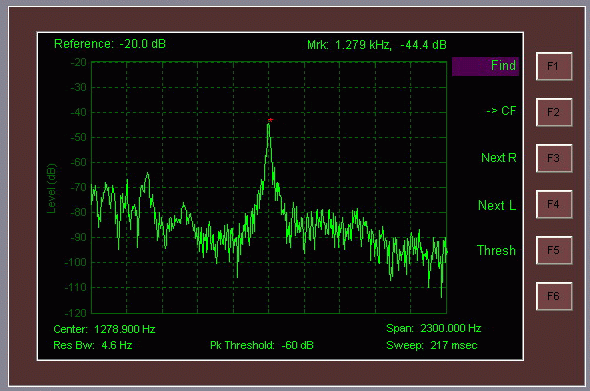When it comes to electronic signal analysis, real-time spectrum analyzer offer an exceptional capability – the ability to dive into signals and unveil their hidden frequency components in real-time. This blog post will serve as your brief guide to understanding what a real-time spectrum analyzer is, how it operates, and the diverse applications that depend on it.
What is a Real-Time Spectrum Analyzer?
A real-time spectrum analyzer is a sophisticated electronic instrument, specialized in revealing the frequency components of a signal as they unfold in real-time. Some examples of real-time spectrum analyzers include the RSA3303A, RSA3408A, and RSA507A from Tektronix. Unlike traditional spectrum analyzers (such as the , which capture a static snapshot of a signal’s frequency spectrum, the real-time variant continuously updates its display, offering an instantaneous and dynamic view of the signal’s frequency content.
At the core of a real-time spectrum analyzer is its exceptional ability to dissect signals into their constituent frequencies and portray this information graphically. The graphical representation, often referred to as a spectrogram or spectrum plot, typically showcases frequency on the x-axis and amplitude (or power) on the y-axis.

Applications Across the Spectrum
Real-time spectrum analyzers find applications across a broad spectrum of fields, including:
Audio Engineering: In the world of sound, these analyzers are indispensable for audio engineers. They aid in the fine-tuning of audio signals, revealing their frequency response. Whether you’re setting up a concert sound system or producing the next chart-topping hit, a real-time spectrum analyzer can be your trusted companion.
RF Analysis: Real-time spectrum analyzers play a crucial role in the realm of wireless communications, radar systems, and RF technologies. Engineers rely on them to analyze and troubleshoot RF signals, ensuring proper operation and compliance with regulatory standards.
Environmental Monitoring: These analyzers extend their reach to environmental monitoring. They assist in assessing noise pollution levels, ensuring compliance with sound level regulations in urban and industrial environments.
Scientific Research: In the realm of scientific research, these instruments are incredibly helpful. They offer real-time insights into signal spectra, supporting experiments and studies across diverse disciplines.
Some real-time spectrum analyzers are equipped with advanced features that elevate their capabilities. These include the ability to capture and record data for later analysis, simultaneous time-domain and frequency-domain analysis, and the capacity to track changes in signal spectra over time.

Fast Fourier Transform (FFT) and Real-Time Spectrum Analysis
At the heart of many real-time spectrum analyzers lies an essential mathematical technique known as Fast Fourier Transform (FFT). FFT is used to convert a time-domain signal into its frequency-domain representation, allowing us to see the individual frequency components. FFT is derived from a complex-valued function of frequency known as the Discrete Fourier Transform, which eliminates redundant terms from the mathematical technique to minimize the amount of operations required. This enables the usage of a high number of samples without affecting the transformation’s speed.
Real-time spectrum analyzers can handle a wide range of frequencies, spanning from the low-frequency audio range (in hertz) to the high-frequency realms of RF and microwave frequencies (in gigahertz). The specific frequency range they cover depends on the model and intended application.
In conclusion, a real-time spectrum analyzer is a versatile instrument that provides a real-time window into the frequency characteristics of signals. It serves as a valuable tool for troubleshooting, optimizing, and researching signals across a multitude of applications. Whether you’re an audio engineer shaping the perfect sonic experience or an RF engineer ensuring seamless wireless communication, the real-time spectrum analyzer, empowered by techniques like FFT, is your key to navigating the rich landscape of frequencies.
Additional Information